Q
Will a Subaru Crosstrek last 10 years?
A Subaru Crosstrek has the potential to last 10 years with proper care and maintenance. Subaru vehicles are generally known for their durability and reliability. The Crosstrek, with its robust build and quality components, can withstand the test of time. Regular servicing as per the manufacturer's schedule, including oil changes, filter replacements, and inspections, is crucial. Also, taking good care of the engine, transmission, and other vital systems by using high-quality fluids and parts helps. Additionally, driving habits play a role; smooth driving and avoiding excessive wear and tear on the vehicle contribute to its longevity. If maintained well, the Crosstrek should be able to serve you well over a decade, providing reliable transportation for years to come.
Special Disclaimer: This content is published by users and does not represent the views or position of PCauto.
Related Q&A
Q
How often do you need to replace tires on a Subaru Crosstrek?
Regarding the recommendation on the tire replacement frequency for the Subaru Crosstrek, it mainly depends on the tire wear, driving habits, and the road conditions in Malaysia. Generally speaking, the service life of tires is about 50,000 to 80,000 kilometers or around 5 years, but the specific replacement time should be determined according to the actual wear. The rainy and humid climate in Malaysia and the frequent starting and stopping on urban roads will accelerate tire wear. It is recommended that car owners check the tire tread depth (the legal minimum depth is 1.6 millimeters) every 10,000 kilometers and pay attention to whether there are cracks or bulges on the tire sidewalls. If you often drive on gravel roads or take long - distance highway trips, you may consider replacing the tires earlier.
Subaru's Symmetrical All - Wheel Drive system has relatively high requirements for tire matching. It is recommended to replace all four tires at the same time to maintain balanced grip. In addition, choosing tires suitable for the tropical climate (such as models with excellent wet - road performance) can improve driving safety during the rainy season. Regular tire rotation (every 8,000 - 10,000 kilometers) also helps to extend the tire service life.
Q
Does the Subaru Crosstrek have a spare tire?
Yes, the Subaru Crosstrek models sold in the Malaysian market are usually equipped with a full-size spare tire. This is a standard configuration provided by the Subaru brand to ensure that drivers can replace the tire in time when encountering tire problems. The spare tire is usually placed under the trunk, making it convenient for users to use in emergencies. For drivers in Malaysia, a full-size spare tire is particularly important for long-distance driving or in areas with poor road conditions, providing better safety assurance.
In addition, the Subaru Crosstrek is also equipped with a full-time all-wheel-drive system, which further enhances the vehicle's stability and passability on complex road conditions. This is also one of the reasons why many Malaysian consumers choose this car. In daily use, it is recommended to regularly check the tire pressure and condition of the spare tire to ensure that it can be used normally when needed. At the same time, knowing how to replace the spare tire correctly is also a basic skill that every driver should master.
Q
Does the Subaru Crosstrek have folding mirrors?
Yes, some high - end models of the Subaru Crosstrek available in the Malaysian market are equipped with the power - folding rear - view mirror function. This design is very practical in narrow parking spaces or when passing other vehicles, effectively reducing the risk of the rear - view mirrors being scratched. The specific configuration may vary depending on the year and model version. It is recommended to confirm the latest specifications with local authorized dealers before purchasing a car.
Apart from the folding function, the rear - view mirrors of Subaru models usually also integrate functions such as heating for defogging and power adjustment. These details reflect the brand's consideration for practicality. It's worth mentioning that the rear - view mirror folding function is particularly useful in Malaysia's rainy climate and crowded urban environment. Many Japanese brands like Toyota and Honda also commonly equip similar configurations on their mid - to high - end models.
If your Crosstrek doesn't have this function, you can also achieve it through third - party modification. However, it's necessary to pay attention to choosing accessories that meet the JPJ certification in Malaysia to ensure driving safety.
Q
Does the Subaru Crosstrek have rear control arms?
The rear suspension system of the Subaru Crosstrek features a multi-link independent suspension design. This design indeed includes rear control arms as an important part. They are mainly responsible for connecting the wheels to the vehicle body and controlling the movement trajectory of the wheels, ensuring driving stability and comfort. On the diverse road conditions in Malaysia, this suspension design can effectively absorb road vibrations, providing better handling and riding experience. To expand a bit, the multi-link suspension system is generally more complex and costly than simple suspensions like the torsion beam. However, it can better balance comfort and sportiness, making it suitable for car owners who often drive long distances or enjoy outdoor adventures. Subaru's Symmetrical AWD system paired with this suspension further enhances the vehicle's performance on slippery or rough roads, which is especially useful during the rainy season or on suburban roads in Malaysia. If you're interested in suspension maintenance or upgrades, you can regularly check the wear of the control arm bushings and ball joints, as these are the key components affecting the suspension's lifespan.
Q
Does the Subaru Crosstrek have automatic wipers?
Yes, the Subaru Crosstrek is equipped with an automatic wiper function on some high - end models. This technology is commonly known as the rain - sensing wiper. It detects the intensity of rainfall through sensors on the front windshield and automatically adjusts the wiper speed. This allows drivers not to operate the wipers manually in rainy days, enhancing driving convenience and safety. Given Malaysia's rainy climate, this function is very practical as it can reduce the frequency of drivers being distracted by operating the wipers. It should be noted that the automatic wiper is not a standard feature across all Crosstrek models. The specific configuration needs to be confirmed according to the model year and version. It is recommended to check the official configuration list or consult local dealers before purchasing a car. Besides Subaru, other brands like Toyota and Honda also have similar technologies, but they may have different names. For example, Toyota calls it the "raindrop - sensing wiper". The principles are largely the same, all achieving automatic adjustment through optical or capacitive sensors. Such intelligent features are gradually becoming common in modern cars, especially suitable for use in regions with a tropical rainforest climate like Malaysia.
Q
Does the Subaru Crosstrek have good visibility?
The Subaru Crosstrek has truly received a lot of praise from many car owners for its visibility performance. Its design fully takes into account the visibility needs of drivers. The front windshield is wide and the inclination angle of the A-pillar is reasonable, which reduces visual blind spots. At the same time, the relatively high seat position allows drivers to more easily grasp the road conditions in the front and on the sides. This is especially useful for the changeable urban roads and suburban environments in Malaysia. The design of the rearview mirrors and the rear window also provides a good rear view, which helps improve safety when parking or changing lanes. To expand a bit, a good visibility design can not only boost driving confidence, but also reduce the risks caused by unclear vision when driving in the rainy days that are common in Malaysia. Subaru has always attached great importance to driving safety, and the Crosstrek is also equipped with the EyeSight driver assistance system, which further compensates for the visibility limitations in extreme weather. If you often encounter congested or narrow roads, the visibility advantage of this car will be more obvious. Of course, the actual experience may vary slightly depending on personal height or driving habits. It is recommended to take a test drive at a local dealership to feel it for yourself.
Q
Does the Subaru Crosstrek have front parking sensors?
According to the configuration information of the Subaru Crosstrek in the Malaysian market, this model does not come standard with front parking sensors. However, some high - end versions or vehicles with post - purchase modifications by owners may be equipped with this feature. For Malaysian consumers who value parking assistance functions, it is recommended to directly confirm the specific configuration with the dealer when purchasing a car, or consider choosing to install original factory accessories to ensure compatibility.
In fact, the parking assistance systems commonly found in modern vehicles are divided into two technical routes: sensors and cameras. The former uses ultrasonic waves to detect the distance to obstacles and issue an alarm, while the latter provides visual image assistance. It's worth noting that even without front sensors, the EyeSight driver assistance system, which comes standard across all Subaru Crosstrek models, can still provide collision warning through the front - mounted camera, indirectly enhancing safety during low - speed driving.
If you often face narrow parking situations, you can also consult the authorized service center about the installation plan for an integrated front - and - rear radar system. Such an upgrade usually preserves the integrity of the original vehicle's electronic system. In Malaysia's rainy climate, it's also an important usage habit to regularly clean the surface of the sensors to ensure their sensitivity.
Q
Does the Subaru Crosstrek have a 360 camera?
Based on the current configuration information of the Subaru Crosstrek in the Malaysian market, the 360-degree panoramic camera system is not standard on this model. However, some high - end versions may be equipped with auxiliary driving features such as a rear - view camera and blind - spot monitoring. For consumers who value a panoramic view, they can consider installing a third - party 360 - degree camera system later. But it should be noted that this may affect the original factory warranty terms. In Malaysia's rainy and humid climate, a 360 - degree camera can indeed improve driving safety, especially when driving on narrow roads or parking in rainy days. Currently, some models of Japanese cars in the same class, such as the Toyota Corolla Cross and the Honda HR - V, have started to come with an original 360 - degree camera, which reflects the growing market demand for panoramic imaging technology. It is recommended that potential car buyers directly consult Subaru's authorized dealers in Malaysia for the latest configuration details. At the same time, they can also compare the actual performance of driving assistance systems of different brands to choose the model that best suits their needs. It's worth noting that driving assistance systems are just a supplement to safe driving, and maintaining a focused driving attitude is the core of driving safety.
Q
Does the Subaru Crosstrek have automatic braking?
Yes, the Subaru Crosstrek is equipped with an Automatic Emergency Braking system (AEB for short). This is a core feature of the Subaru EyeSight driver assistance technology suite. It's designed to monitor vehicles or pedestrians ahead through a front - mounted camera. When a potential collision is detected, it automatically applies the brakes to reduce the risk of impact or avoid an accident. This technology is especially useful for the ever - changing city and highway driving conditions in Malaysia.
In addition to AEB, the EyeSight system also includes functions such as adaptive cruise control, lane - keeping assistance, and prevention of accidental accelerator use, which further enhance driving safety. Subaru's EyeSight system has performed excellently in multiple global safety evaluations. For example, it has received a five - star rating from ASEAN NCAP, which proves its reliability.
For Malaysian consumers, this kind of active safety technology can effectively handle common local sudden traffic situations, such as motorcycles cutting in or sudden braking. It should be noted that the system's performance may be affected by weather or visibility, and drivers still need to stay focused. Currently, most Japanese and European models in the same class also offer similar functions, but Subaru's camera - based solution has unique advantages in cost - control and adaptability.
Q
Do Subaru Crosstreks have blind spot monitoring?
Yes, some models of the Subaru Crosstrek are indeed equipped with a Blind Spot Monitoring system (BSM for short). This feature is quite common in the high - end versions in the Malaysian market. For example, models with the EyeSight driver assistance system usually integrate this technology. It uses the rear bumper radar to detect vehicles on the side and rear, and displays warning icons on the rear - view mirror or dashboard to enhance the safety of lane - changing. For Malaysian consumers, this function is especially useful on highways or in congested sections, effectively reducing the risk of accidents caused by blind spots.
It should be noted that there may be differences among Crosstreks of different years and configurations. It is recommended to confirm the specific list of functions with local dealers before purchasing a car. Additionally, blind spot monitoring is usually used in conjunction with Rear Cross - Traffic Alert (RCTA), which further strengthens protection when reversing. Such active safety technologies have become standard features for many brands, like Toyota's TSS or Honda's Honda SENSING. However, the algorithms and sensitivities of each system may vary slightly due to brand - specific tuning.
If budget allows, it is recommended to give priority to models with a complete set of driver assistance functions. After all, the rainy climate and complex road conditions in Malaysia pose higher requirements for driving safety.
Latest Q&A
Q
How expensive is it to maintain a Volvo XC90?
In Malaysia, the maintenance costs for the Volvo XC90 sit in the upper-middle range for luxury SUVs. Regular services like oil changes and filter replacements typically run between RM800 to RM1,200 per visit, depending on the type of oil used and the specific pricing at each authorized service center. Major services, which might include brake pad replacements and transmission fluid changes, can set you back anywhere from RM3,000 to RM5,000. It’s definitely advisable for owners to stick to the official maintenance schedule to keep the vehicle performing at its best and to avoid even heftier repair bills down the line.
As a luxury SUV that prioritizes safety and technology, the XC90 does come with relatively higher maintenance costs. However, Volvo’s reputation for durability and high-quality components means lower long-term failure rates, which helps offset those unexpected repair expenses. Malaysia’s authorized Volvo service centers offer transparent maintenance packages, so owners can get a clear idea of costs upfront and plan their budgets accordingly. It’s also worth considering an extended factory warranty plan to cover potential high-cost repairs later in the vehicle’s life.
When stacked against other luxury brands, Volvo’s maintenance fees are reasonably competitive. And let’s not forget—its top-tier safety tech and eco-friendly interior materials are big reasons many owners are happy to invest that little bit extra.
Q
What is the life expectancy of a XC90?
The Volvo XC90, as a luxury SUV, typically enjoys a service life of 15 to 20 years in the Malaysian market, though this can vary depending on maintenance upkeep, driving habits, and local climate conditions. Sticking to regular oil changes, transmission fluid replacements, timing belt services, and strictly following the manufacturer's recommended maintenance schedule can significantly extend its lifespan. Malaysia's hot and humid environment can accelerate the aging of rubber components and electronic parts, so it's advisable to regularly inspect chassis bushings, weatherstripping, and wiring harnesses. The Drive-E engine under the hood has a solid reputation for reliability, but using the correct grade of fully synthetic oil is a must to ensure it performs at its best. For those looking at a used XC90, pay close attention to the air suspension (if equipped) and the turbocharging system – these are common high-maintenance areas on premium models. It's worth noting that Volvo's safety tech, like the City Safety system, tends to hold up well even in high-mileage vehicles, which is a core strength of the brand. With proper care, the XC90 is more than capable of serving Malaysian families for the long haul. Its durability is on par with German rivals in the same class, but it often comes with a more attractive maintenance cost advantage.
Q
Which Volvo XC90 to avoid?
Honestly, every version of the Volvo XC90 brings its own unique strengths and character—there’s really no model you should outright avoid. But if you’ve got specific needs or priorities, there are a few things worth keeping in mind. Let’s break it down. If you’re working with a tight budget but still want solid features, the 2020-2022 models might be tricky since some of those are no longer in production. That could mean higher costs or more hassle down the line when it comes to maintenance and finding replacement parts.
Now, if value for money is your main goal, the 2025 Volvo XC90 Ultra T8, priced at RM 434,888, sits on the higher end. If you don’t really need much all-electric range, you won’t get to fully leverage its plug-in hybrid benefits, making it a bit of a stretch cost-wise. And let’s say you’re not overly fussed about the latest power upgrades or tech tweaks—then the incremental improvements in newer models might not feel worth the extra cash. In that case, going for an older model could save you a pretty penny upfront.
Q
Is the XC90 a large SUV?
Yeah, the Volvo XC90 is definitely a full-size SUV. It stretches close to 5 meters in length and has a wheelbase over 2.9 meters, offering a three-row, seven-seat layout. The space is roomy and comfortable, making it a solid choice for Malaysian families or anyone needing to haul multiple passengers. Over here in Malaysia, the XC90 has built up a good following thanks to its Scandinavian luxury design, cutting-edge safety tech, and strong performance. The T8 plug-in hybrid, in particular, strikes a nice balance between power and eco-friendliness, which aligns perfectly with what local folks expect from a premium SUV. Now, full-size SUVs generally give you better ground clearance and cargo capacity, but that larger footprint can feel a bit cumbersome when navigating the tighter streets of cities like Kuala Lumpur. So, it's smart to really think about your daily driving needs before taking the plunge. Rivals in this segment include German heavyweights like the BMW X7 and Mercedes-Benz GLS – definitely worth checking out how they stack up in terms of space, features, and overall driving feel before making a decision. Given Malaysia's hot and rainy climate, the XC90's panoramic sunroof and four-zone climate control are nice touches that boost comfort. And of course, Volvo's City Safety system adds an extra layer of security when dealing with tricky traffic situations.
Q
What is the best year of XC90 to buy?
When shopping for a Volvo XC90 in Malaysia, the second-generation models from 2016 onwards are your best bet – especially the post-2018 facelift versions. These come with the more refined Drive-E turbo engines (T5/T6/T8), an upgraded Sensus infotainment system, and revised suspension tuning that better suits local road conditions. If your budget stretches further, the 2020+ models step up with standard Pilot Assist semi-autonomous driving and the CleanZone air purification system, both of which are surprisingly handy in our tropical climate.
A quick heads-up: early 2016-2017 builds had occasional electronic system lag issues, so we’d strongly recommend going through the Volvo Selekt certified pre-owned program to get that factory warranty peace of mind. What really sets the XC90 apart in its class is the standard 7-seat layout and that typically Volvo超高安全配置 – including the rollover protection system. That said, it’s worth cross-shopping against the Lexus RX or BMW X5 from the same model years. European cars do tend to have slightly higher maintenance costs here compared to Japanese rivals, though Volvo’s factory 5-year free servicing plan helps take the edge off that difference.
View MoreRelated News
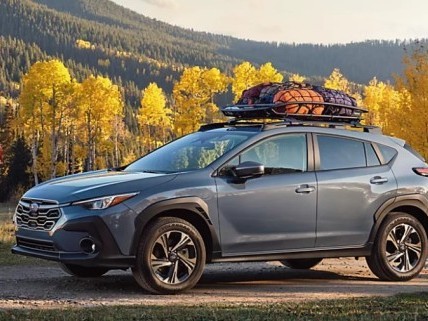
Brand new hybrid system, range over 1000km! New model Subaru Crosstrek coming in December!
RobertOct 22, 2024

Subaru Registers New EV Trademark, Signaling Strategic Shift
Kevin WongAug 8, 2025
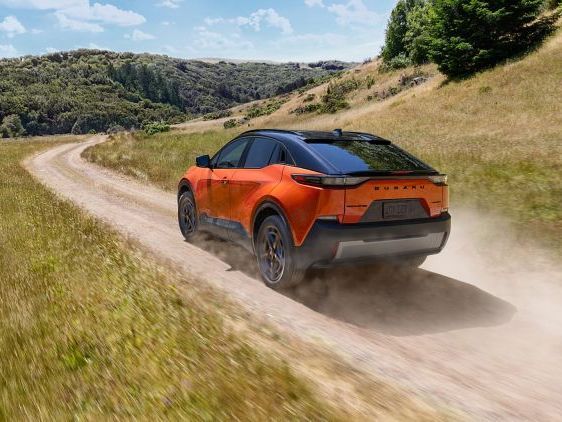
Uncharted is Subaru's first front-wheel-drive car, with a range of up to 482 kilometers.
MichaelJul 18, 2025
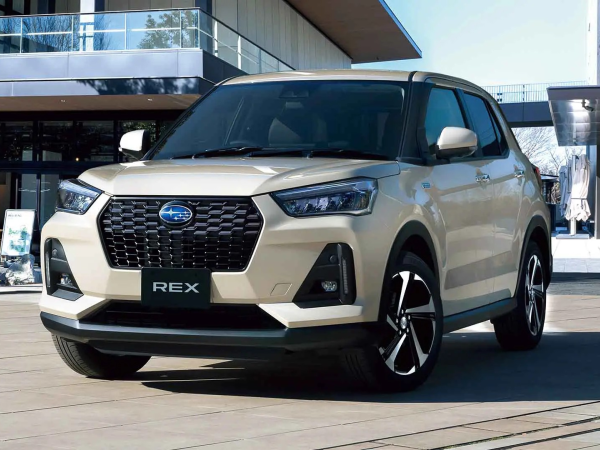
SUBARU REX Hybrid vs Nissan e-POWER: Spot the Difference!
WilliamJun 24, 2025
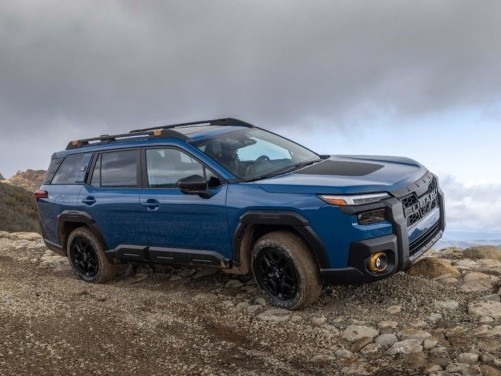
All-New Subaru Outback Debuts with SUV-Inspired Styling
JohnApr 22, 2025
View More

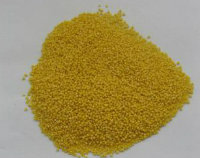



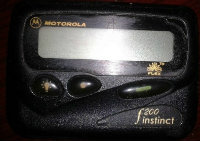






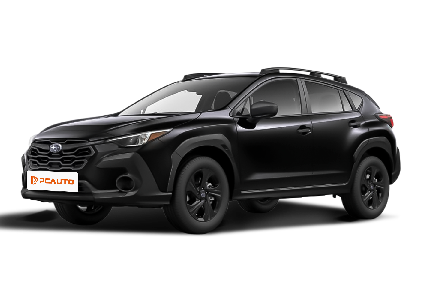




Pros
Cons